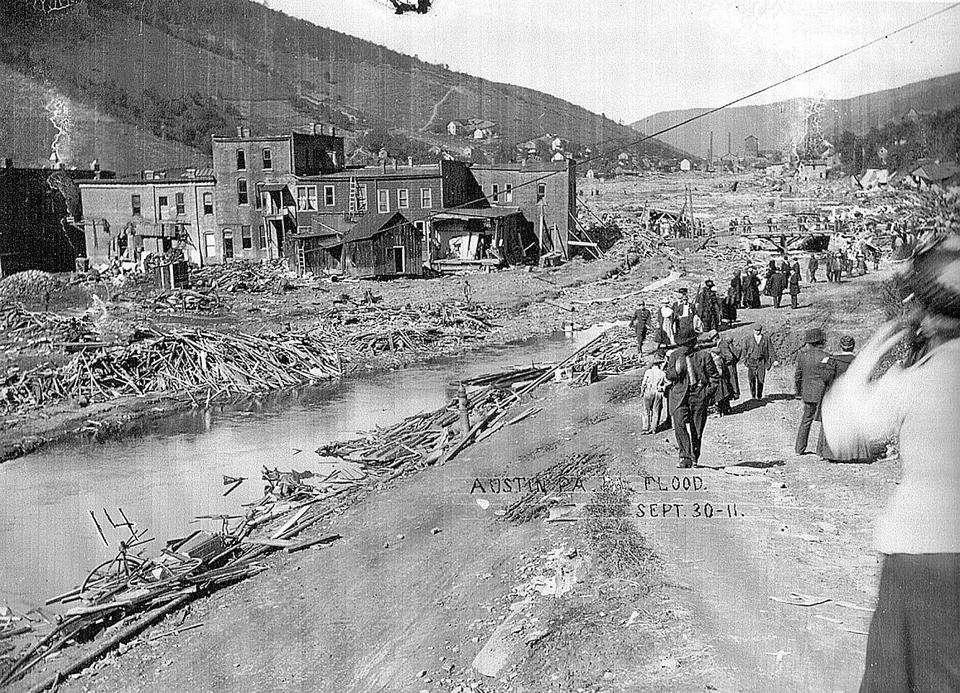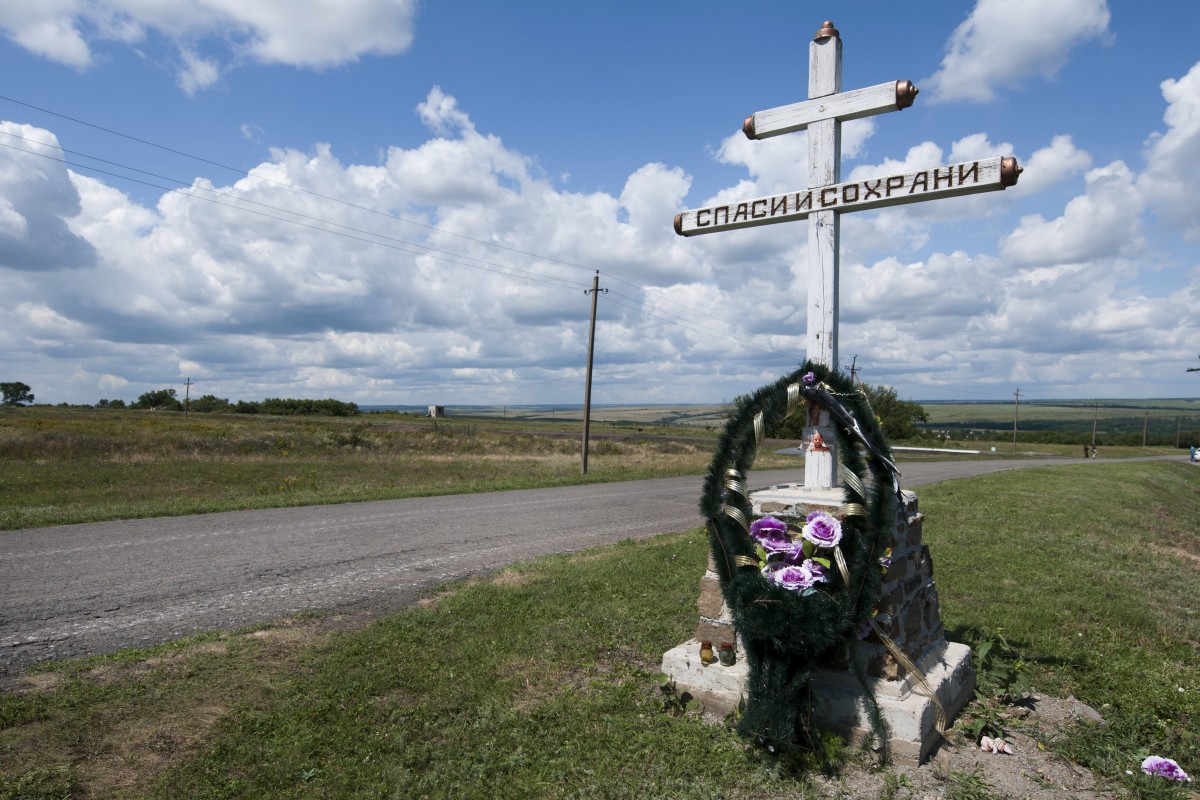
Today marks the 104th anniversary of perhaps the single greatest disaster in the history of this area of the Twin Tiers — the failure of a concrete dam and subsequent destruction of the towns of Austin and Costello on Sept. 30, 1911, in Potter County, Pa.
Pressure from about 250 million gallons of water broke the dam, which was built two years before to supply water for the Bayless Pulp and Paper Co. The dam stood 50 feet high and was more than 500 feet long — it had been dubbed by some as “the dam that could not break.” The water from the dammed-up Freeman Run swept up logs and other debris, creating a grinding wall of devastation. A total of 78 people are officially reported killed in the disaster, although it is believed by historians that more people — possibly traveling businessmen, visitors to the town, lumbermen who had brought in logs to the Bayless Co. — perished in the disaster and their bodies were not found.
Austin was a small city of 3,000 people in 1911.
Indeed, newspaper dispatches even two days after the flood reveal how murky information was in the aftermath, given the communications abilities and the state of emergency management response of that day.
A headline on the front page of the Oct. 2, 1911, edition of the Olean Evening Times (the dam broke on a Saturday; the Evening Times was not printed on Sundays) stated: “Official Count Gives Death List as 250, But Citizens Claim It Will Reach 550.”
Rescuers at the scene expressed certainty that the death toll would be in the hundreds, and it was feared that great piles of debris would have to be burned — along with the bodies it was assumed they covered — because of concerns about disease.
An editorial in the Evening Times read:
“The nation stands appalled at the fearful calamity that has overwhelmed Austin. Not since the fateful Johnstown flood of 1889 has there been such a holocaust of death in a single accident in this country. Coming so close to Olean, this catastrophe brought with a terrible shock to all residents of this city. Many of them had relatives in the stricken city, and many more of them had friends whose safety has not yet been established.
“The suspense here yesterday was poignant, and every additional report but added to the grief of the waiting people. Practically no definite information could be secured and only such news as filtered in from Keating Summit and other nearby places, inadequate in respect to the names of the dead or the survivors, came to relieve their anxiety. But in most cases, this but added to the suspense.
“Everything that can be done to relieve the situation is being done. Nothing that can mitigate the sorrow and horror of the calamity is being left undone. All the necessary medical aid is upon the scene, the homeless people are being placed in the homes of hospitable neighbors, and at present there is food amply sufficient to meet the needs of the sufferers.”
A permanent memorial was dedicated in September 2013 to the people who lost their lives in the flood. The memorial marker, in Austin Dam Memorial Park, is made of light-colored stone with the names of the deceased etched in black upon its face. The monument stands directly in front of the dam as a solemn memorial to those who lost their lives that day.
Thursday 1 October 2015
http://www.oleantimesherald.com/news/article_de892bd6-672e-11e5-9324-13d1c038ece3.html?mode=image&photo=0
continue reading



